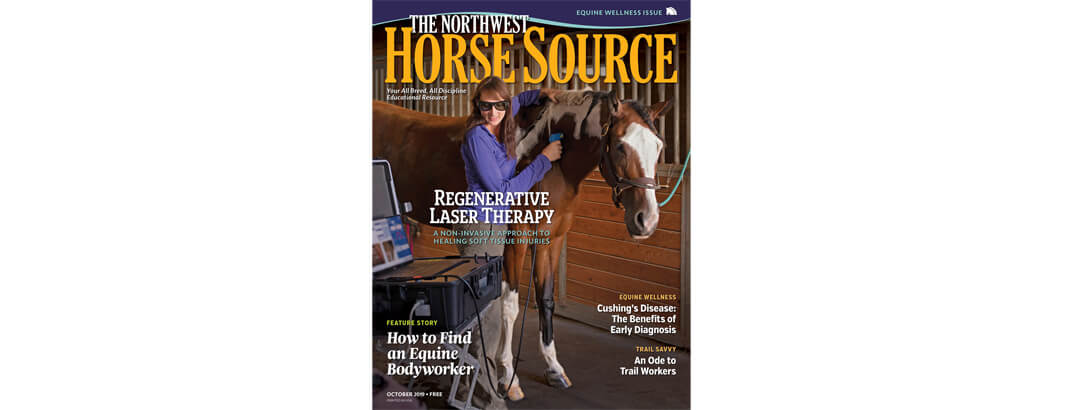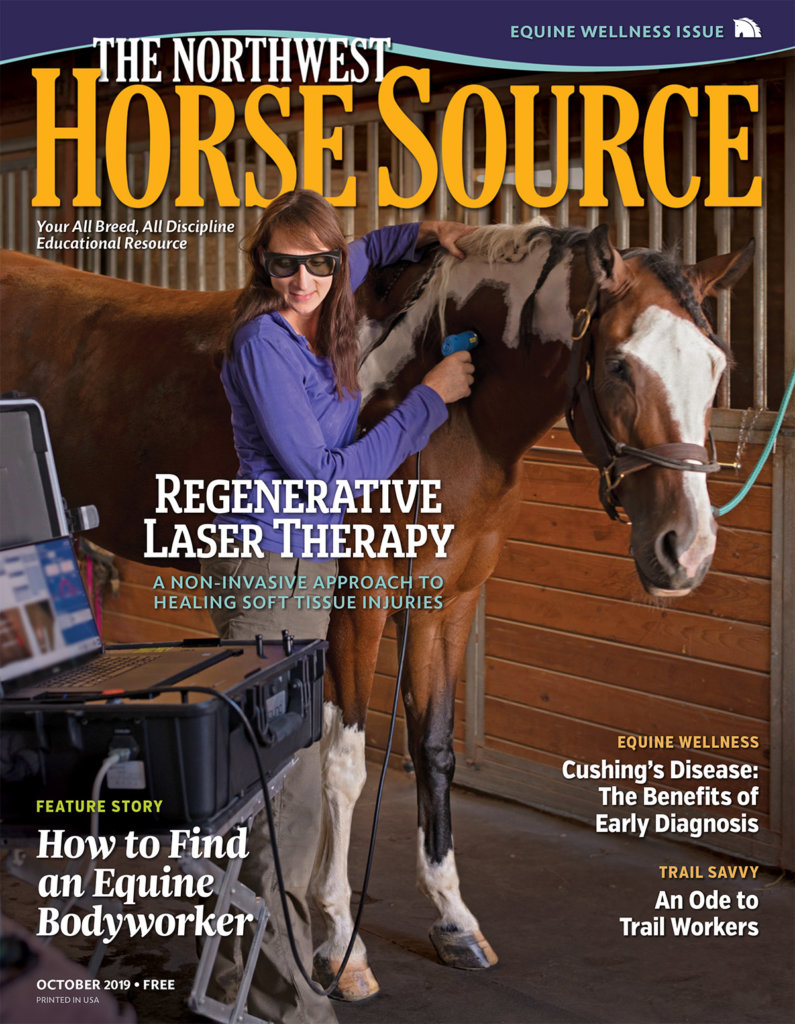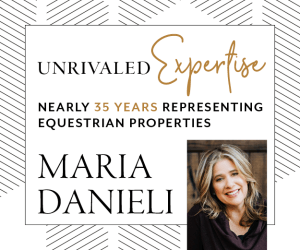P.E.T.S. Offers Proven New Laser Therapy
By Blaine Kohl
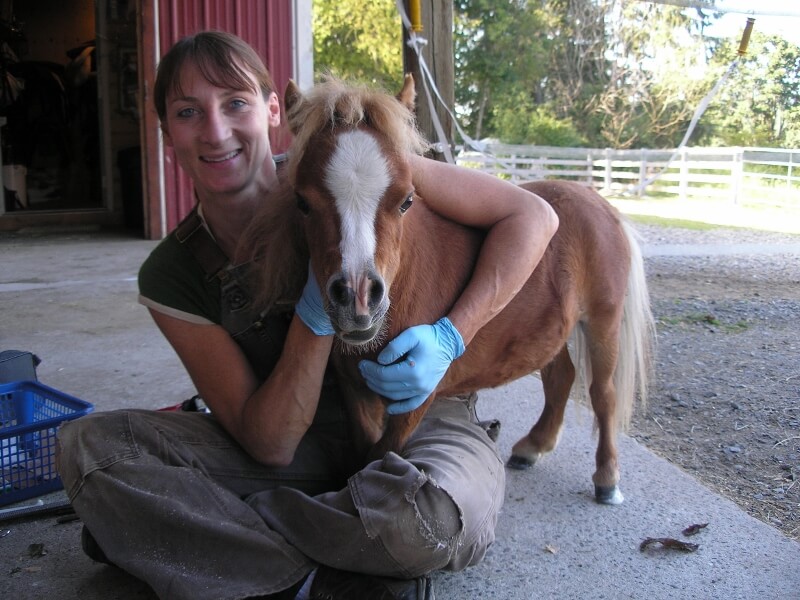
Have you ever noticed your horse isn’t quite right? Perhaps he’s not performing at the level he once was? After a visit with the vet, you learn your horse has a soft tissue injury.
In many cases rest, controlled exercise, and cold therapy can provide a successful outcome. But often, regenerative therapies—techniques focused on stimulating the body’s natural immune and disease mitigating capabilities—can improve or shorten the healing process rather than relying upon drugs and medications.
Injuries once considered career-ending are being met with renewed confidence and optimism by using newly available Regenerative Laser Therapy (RLT). Case studies have documented equines that were scheduled for euthanasia but then treated with RLT as a test. The horses in these studies showed phenomenal recovery and were able to return to some level of work.
Why is RLT Different?
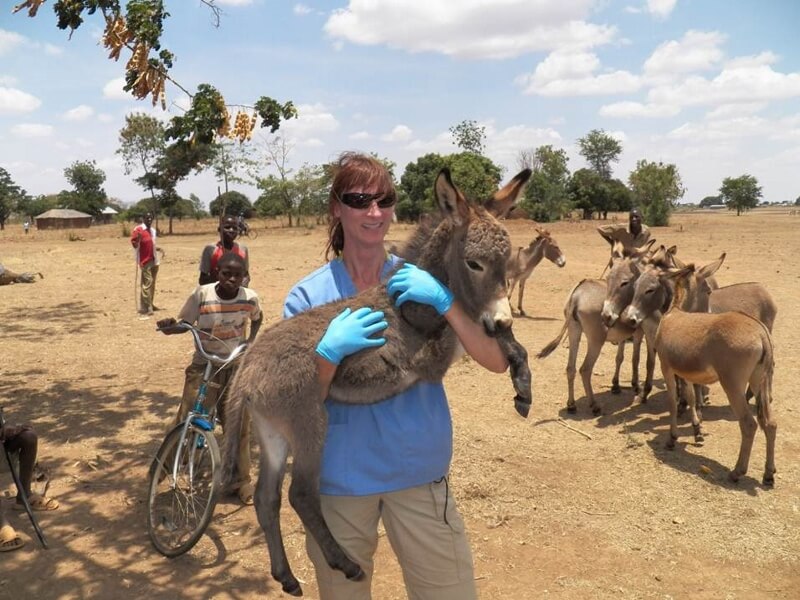
There are minimal similarities between RLT and previous therapeutic lasers. Previous lasers were built with diodes and classified as Low Level Laser Therapy (LLLT). Smart RLT is a Class IV laser providing High Intensity Laser Therapy (HILT). It uses an intense beam of light directed into the patient’s tissue. Horses have a slower metabolism than companion animals, and thus require a higher power and dosage in order to biostimulate and repair deeper pathologies.
To deliver energy to the deep layers of equine tendons and ligaments, you need a wavelength that bypasses most of the melanin in their skin and water in the tissue. To mechanically disrupt the cellular matrix and impact cellular metabolism, a specific dose per pulse is required. The key is to deliver the correct amount of energy per pulse that achieves the therapeutic threshold.
RLT causes vasodilation which brings healthy, nutrient-rich blood to the target area. That brings more oxygen to the cells and generates more energy. Increased energy for the cells means reduced pain, reduced inflammation, better fiber alignment, and quicker healing and recovery. The ability of RLT to do so explains much of the documented clinical success.
Conditions that Benefit from RLT
Research indicates RLT has many uses for both acute and chronic cases as well as for pre- and post-performance treatment. These include:
- Accelerated tissue repair and cell growth—beneficial for tendon and ligament injuries
- Faster wound healing
- Anti-inflammatory effects
- Stimulation of drainage from the lymphatic system
- Improved nerve function
- Improved vascular activity
- Reduced fibrous tissue formation or scarring
- Decreased tissue inflammation around fractures
- Osteoarthritis, sore backs, necks and sacroiliac discomfort
RLT can be used for treatment of tissue within the hoof capsule and may be used in combination with stem cells, platelet-rich plasma, or shock-wave therapy. It’s also useful when injuries have occurred in locations that are difficult to access which may reduce the full efficacy of other therapies.
Additionally, if you have a show coming up, you can target specific areas with pre-performance use of the laser on the three days leading up to your class to help your horse feel its very best. Only FEI classes have a withdrawal time assigned to laser treatments. Sedation isn’t necessary and the treatment time is approximately 10 minutes.
Dr. Dana Bridges-Westerman, owner of Professional Equine Therapeutic Services (P.E.T.S.), is excited to be able to offer this service as there are only a few of these lasers in North America. The mobile service is based in Monroe, Washington and the service area spans from Stanwood to Maple Valley. Treatments outside this area may also be arranged.
Can your Horse Benefit from RLT?
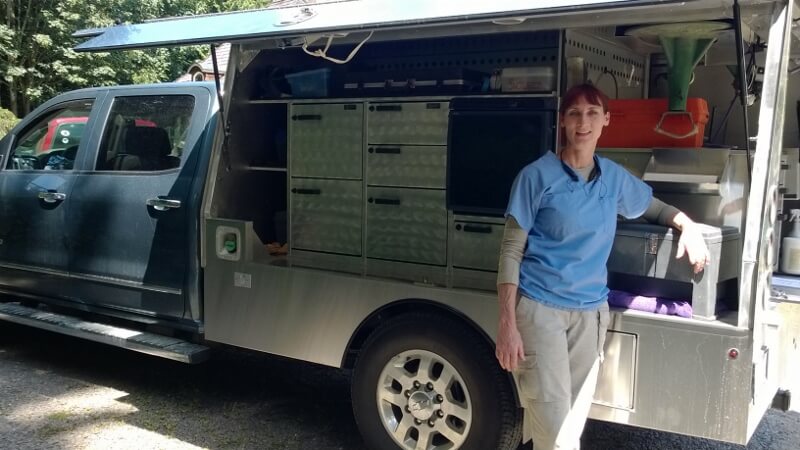
Because RLT outcomes have been so positive, Dr. Dana wants horse owners to experience the results firsthand. Therefore, for a limited time, a patient’s first RLT treatment is free and introductory packages are available.
Treatments differ depending upon the condition being addressed, ranging from 1-3 treatments for pre- and post-performance to approximately 24-36 treatments for chronic cases. Regardless, it’s important for horses to be evaluated for their condition and, if appropriate, be prescribed a customized therapy plan.
Want to learn more about how RLT can help your horse? Need help understanding what might be going on with your horse? Call P.E.T.S at 360-794-5409 or email at [email protected]. Learn more about Dr. Dana at www.proequine-dvm.com. Updates about P.E.T.S and RTL will be posted on Facebook at www.facebook.com/ProfessionalEquine.

The Northwest Horse Source is an independently owned and operated print and online magazine for horse owners and enthusiasts of all breeds and disciplines in the Pacific Northwest. Our contemporary editorial columns are predominantly written by experts in the region, covering the care, training, keeping and enjoyment of horses, with an eye to the specific concerns in our region.


